A Stamp of Approval
Labels and Stamps on C. F. Martin Guitars
C.F. Martin generally stamped their flat top guitars in three places, on the neck block, on the inside of the back of the guitar, usually on the center strip, and on the back of the headstock of guitars with cedar or mahogany necks, or on the back of the guitar near the neck block on guitars with ebonized necks and a number of early cedar neck guitars.
Early Martin guitars are stamped "C.F. Martin, New York" in all three places. Beginning in 1867, the year Martin took on partners and incorporated, the headstock stamp remained the same, but the inside center strip stamp read "C.F. Martin & Co., New York", and neck block stamp followed shortly thereafter. Even after Martin moved to his new home in Cherry Hill, near Nazareth, Pennsylvania, his guitars were sold through a representative in New York, so the New York stamp remained. In 1898, after this sales arrangement disolved, the Martin company began stamping their guitars "C.F. Martin, Nazareth, PA."
In 1898, Martin also began numbering their guitars, beginning with number 8000, an estimate of the number of instruments produced to that date, stamping the serial numbers on the neck block below the "C. F. Martin & Co." stamp.
The earliest Martins have paper labels, sometimes accompanied by an outer back stamp as well. Martin also occasionally used paper labels on instruments built for dealers, or other special editions.
Finally, Martins supplied with coffin cases had a label glued to the inside of the top of the case which indicated the style and size of the guitar. Surprisingly, a fairly large percentage of the original cases have survived with the labels still glued to the cases over a century later. If the guitar were separated from the case, however, there would be no designation of the style number and size. In 1934, Martin began stamping the style name and size on the neck block below the serial number. For a short time in 1900, Martin also stamped the serial numbers of some guitars on the end of the headstock.
Paper Labels
Several different labels appear on Martin Guitars with the 196 Hudson Street New York address.
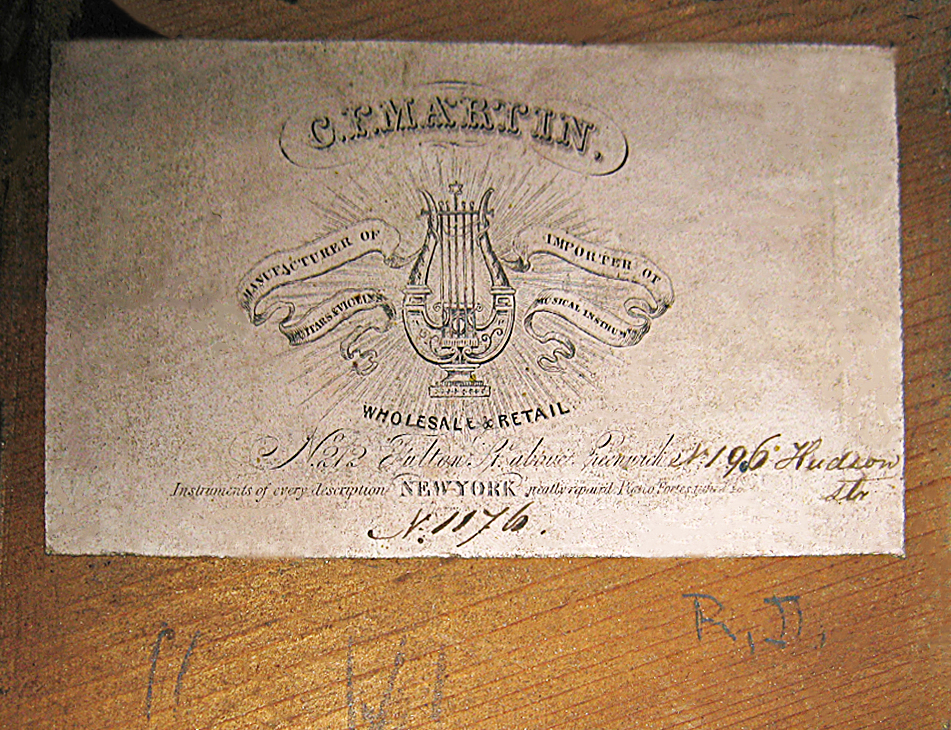
I've located Hudson Street Martins with similar labels and the following numbers:
No. 1114 C. F. Martin Museum. Raised ivory fingerboard & neck, tapered fretboard
No. 1160 Private Collection. Flat ebony fingerboard, round end fretboard
No. 1168 Sold by Gruhn Guitars, Nashville. Raised ivory fingerboard, tapered fretboard
No. 1173 Fred Oster, Vintage Instruments, Philadelphia. Flat ebony fingerboard, round end fretboard
No. 1176 Illustrated above, Raised ebony fingerboard, round end fretboard
No. 1188 Metropolitan Museum of Art, New York. Raised ebony fingerboard, tapered fretboard
In the 1840's Martin teamed with John Coupa, who sold guitars with the "Martin & Coupa" label.
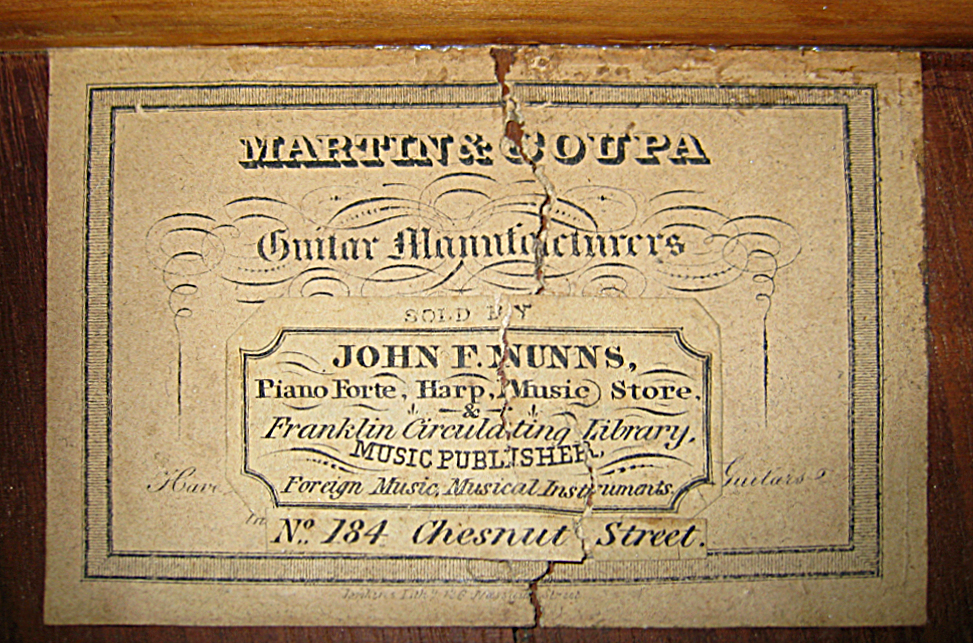
The "M. Nunes & Sons, Royal Hawaiian" label appears on some Hawaiian Guitars made for the Southern California Music Company to appeal to the Hawaiian market, while other SoCal models sport the "Rolando" label.

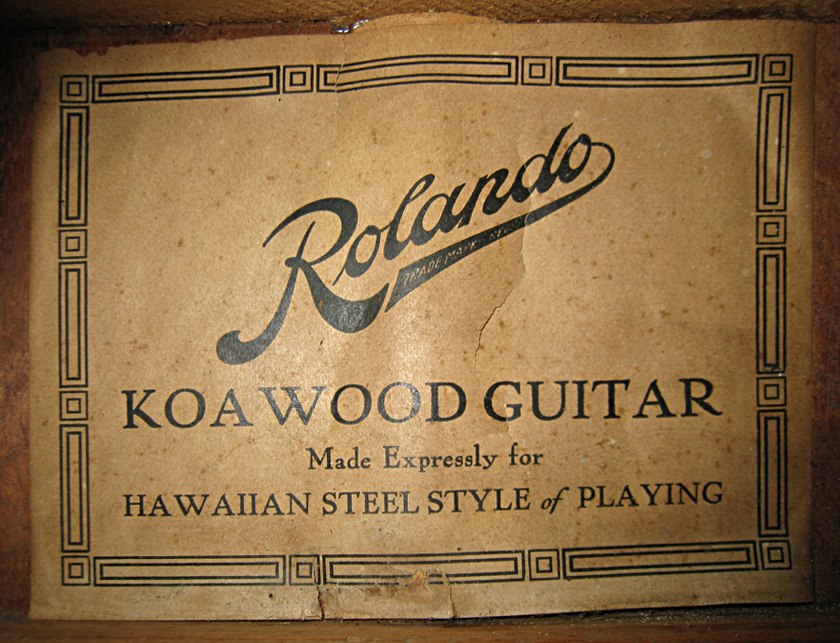
The S.S. Stewart Label Appears on 2-17 Special Guitars Produced for Buegeleisen & Jacobson in 1923
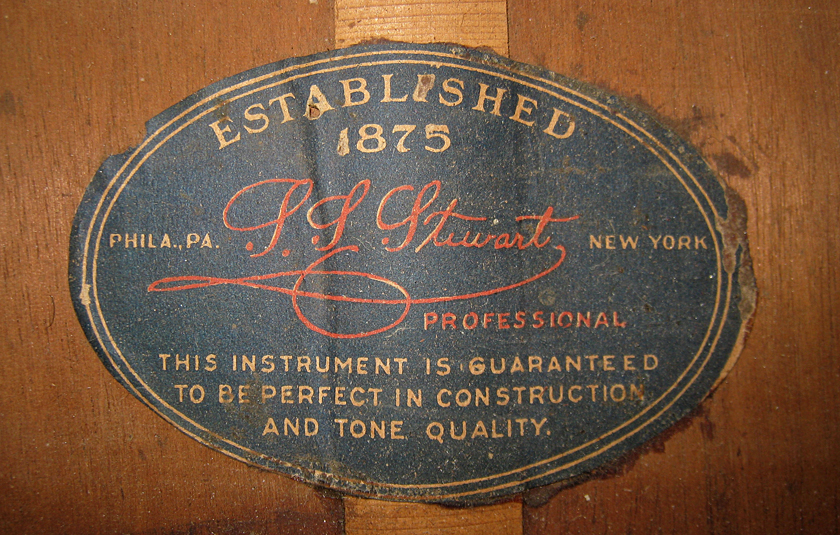
Headstock Stamps and Decals
Early Martin Guitars had C.F. Martin New York stamped on the back of their headstocks.
Numerous examples have been seen with holes drilled in the headstock, which were thought to be the result of unsophisticated owners who had clumsily defaced these beautiful guitars. In fact, these holes were drilled in the headstocks of early Martins by Mr. Martin himself, for ribbons attached for hanging.
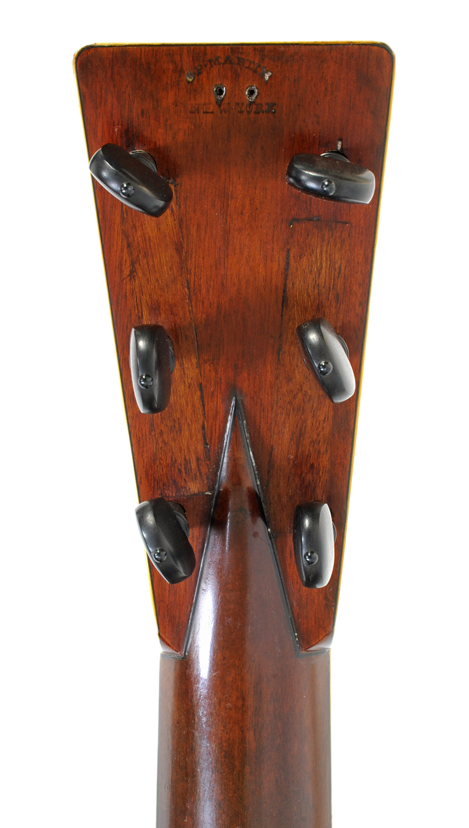
This 1896 Martin 0-42 has a "Nazareth, PA", which is unusual for a pre-1898 Martin.
During much of the 19th century, Martins with tuning pegs also had a pegs made of ivory or horn on the back of the headstock for hanging.
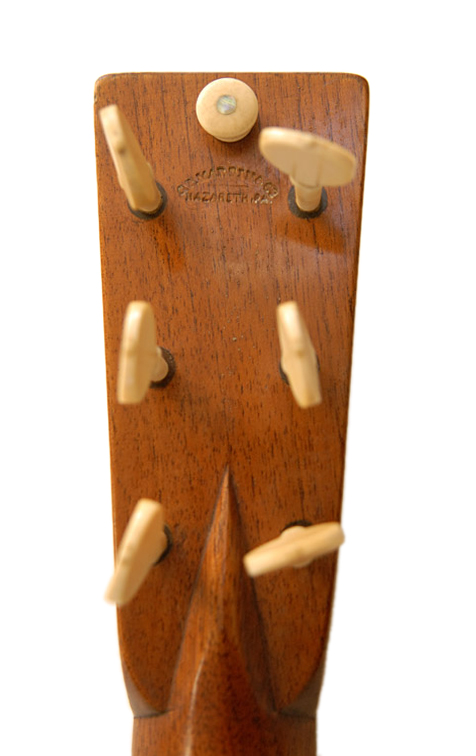
The first Martin logos appearing on the front of some Martin headstocks in 1932 were not decals, but were printed in gold leaf. These logos can be identified by the lack of the black outline seen on the later decals.
1933 Martin 0-17
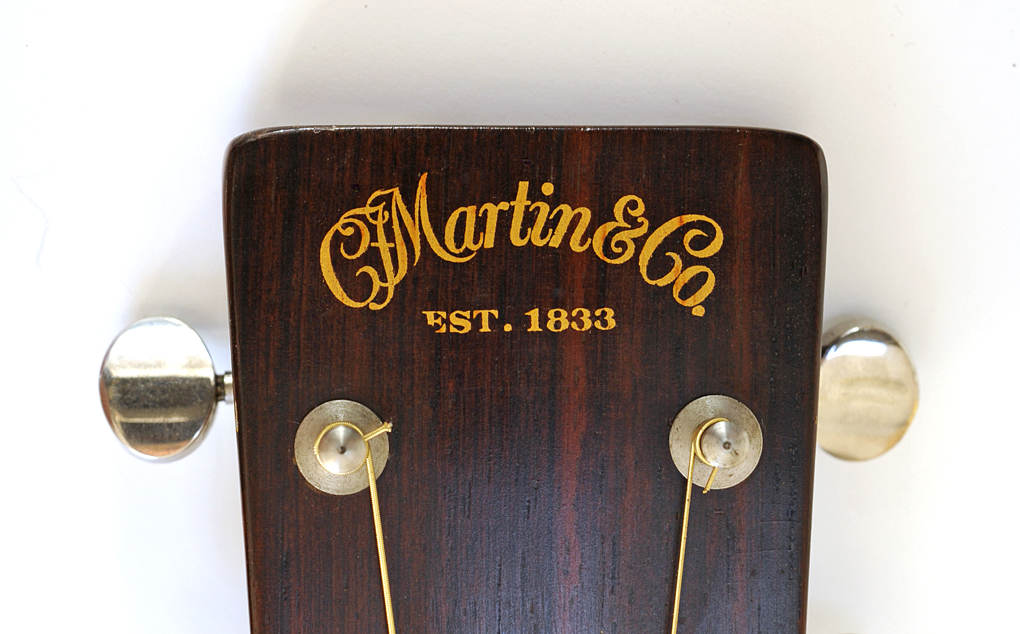
The solid gold leaf logo was replaced by a gold decal with a black outline.
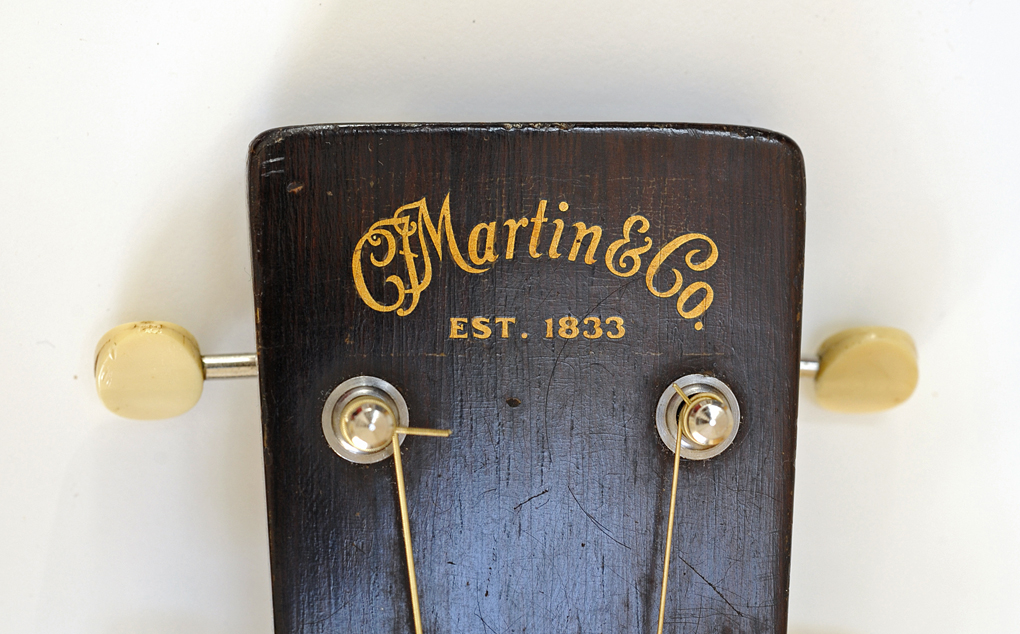
Until 1934, the front decal was used in conjunction with the stamped logo on the back of the headstock which was still used in this transitional period.

According to the revised edition of Longworth, "the second version of the logo, with black edging, soon came in two sizes. The large size was used on the solid headstock, while the smaller size was used on slotted headstocks, and also on mandolin and ukulele headstocks."
Here you can see two of the same model, both from 1934, presumably the year they changed, one with the larger, and one with the smaller logo.
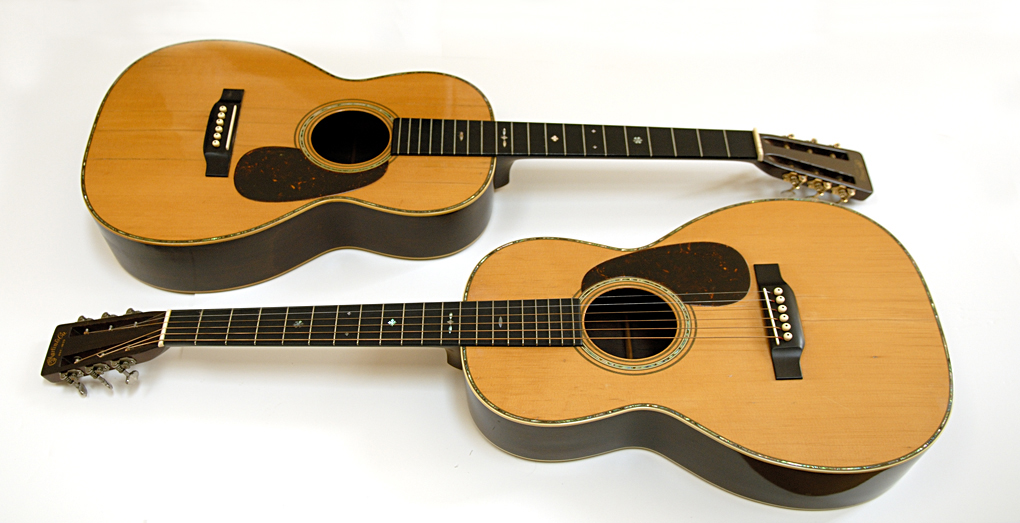
Here's the earlier, larger logo on a '34 00-40H:

Here's the later, smaller logo on a 1962 000-28C.
Note that on the "G" and "C" Model Martins, built for gut or nylon strings after the introduction of steels strings, Martin followed the tradition of leaving the head plates on classical guitars blank by placing the decal on the back side of the headstock.

The Southern California Music Company requested the the Martin name not appear on their early Hawaiian guitars, preferring to use the name "Nunes", which was respected among Hawaiian players.
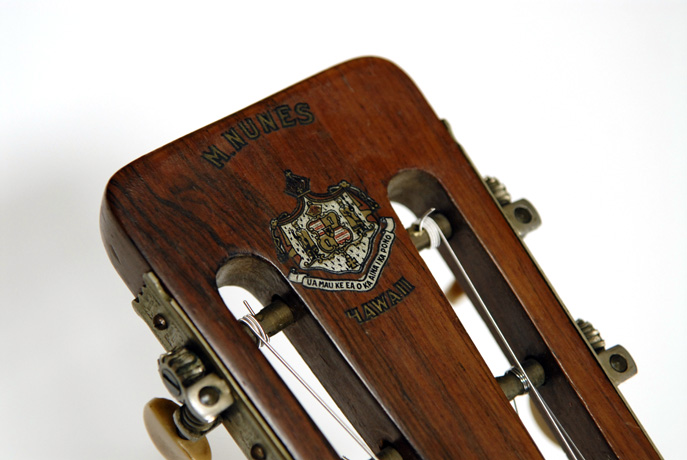
During the years, some of their guitars had the SoCal name stamped on the back of the headstock, some had the Martin name, some both, and some none at all.
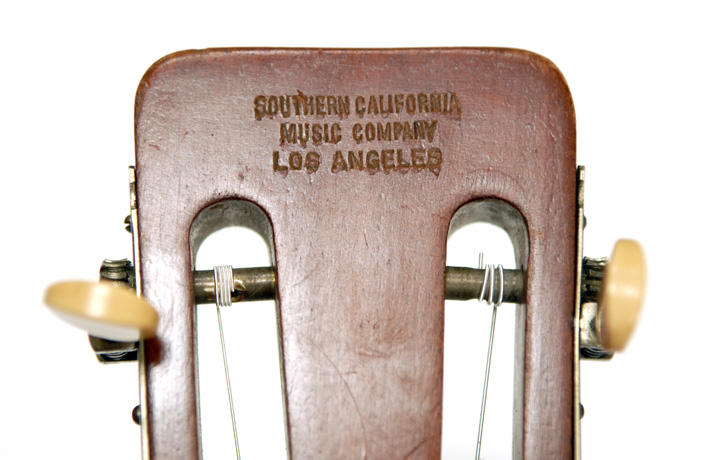
The Oliver Ditson Company had their name stamped on the back of headstocks.
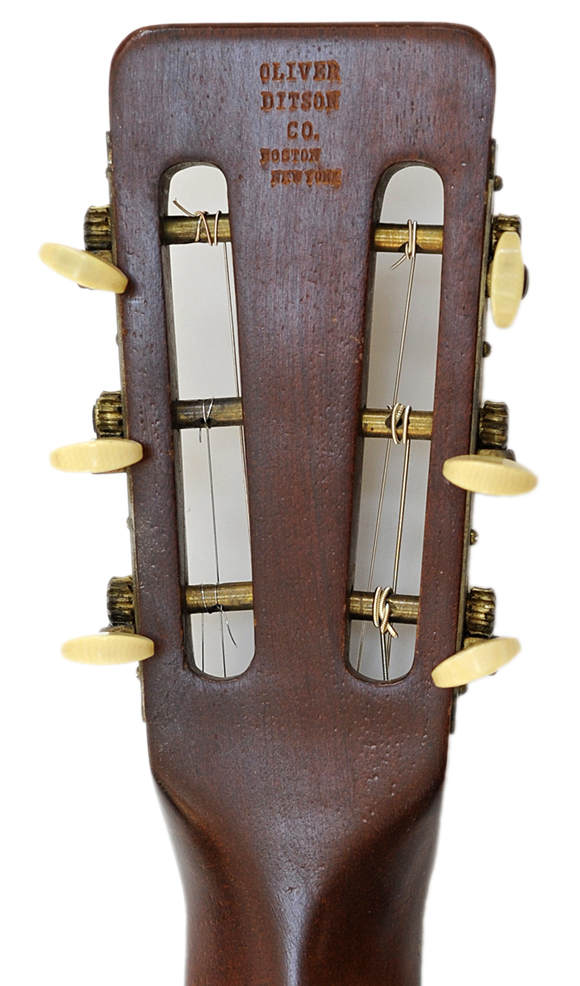
The Wurlitzer Company chose to use both their name and the Martin name on some guitars, while you will find only the Wurlitzer name on others.
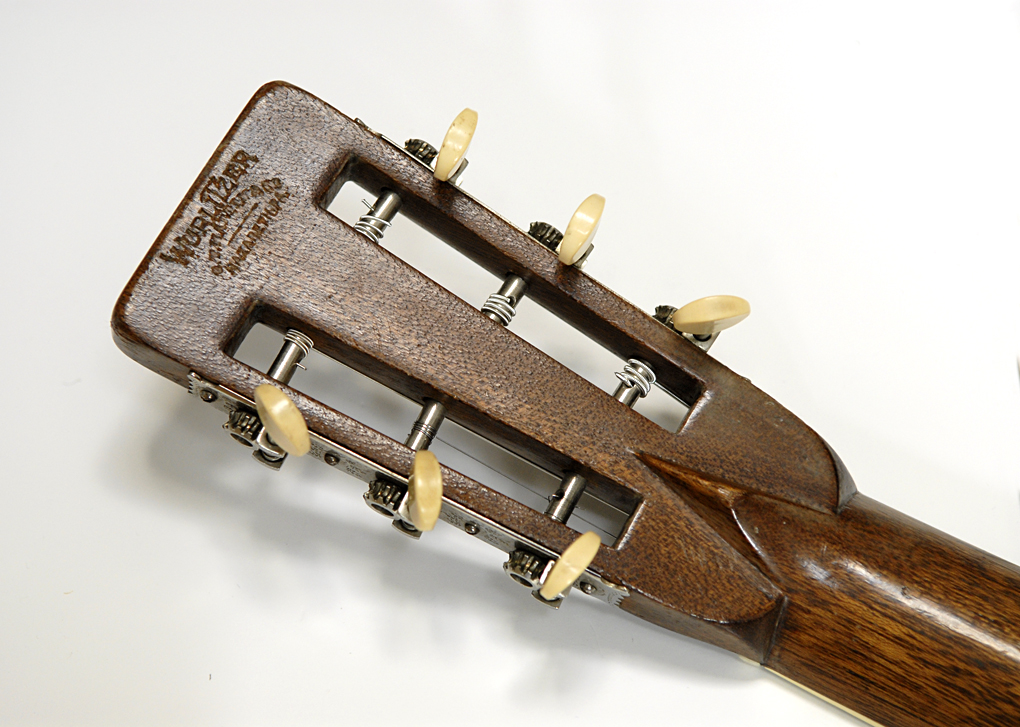
The Grinnell Store in Detroit, a major Martin dealer, chose the name "Wolverine" for their guitars.
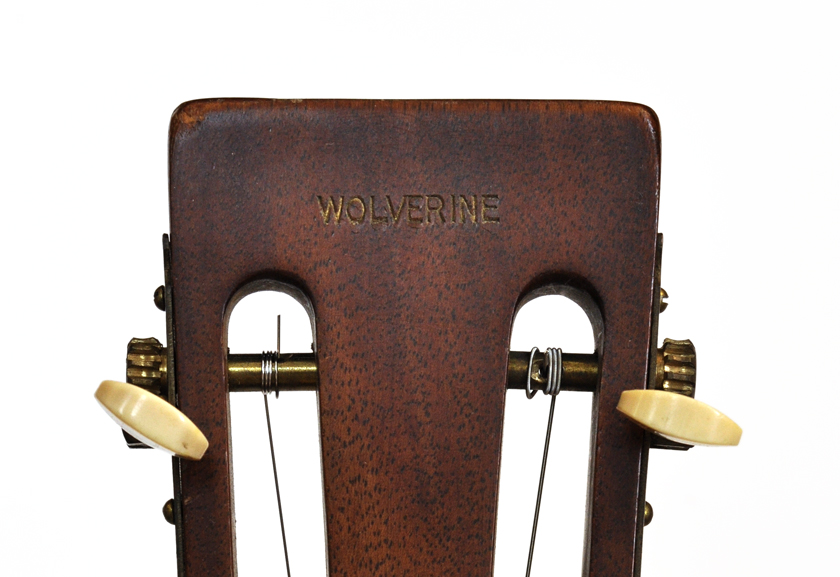
In 1923 Martin Produced the S.S. Stewart 2-17 Special for Buegeleisen & Jacobson
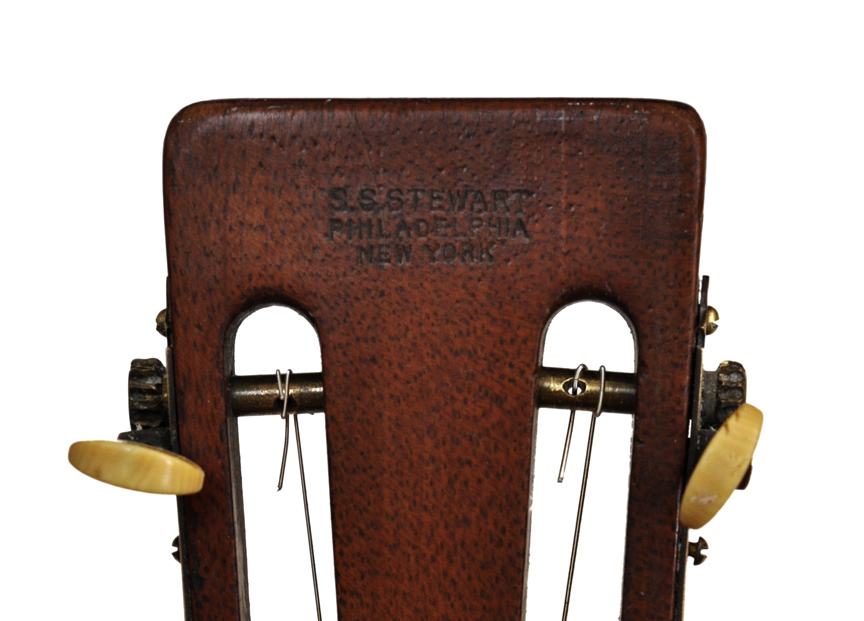
In 1922 Martin produced the Beltone 2-17 Special
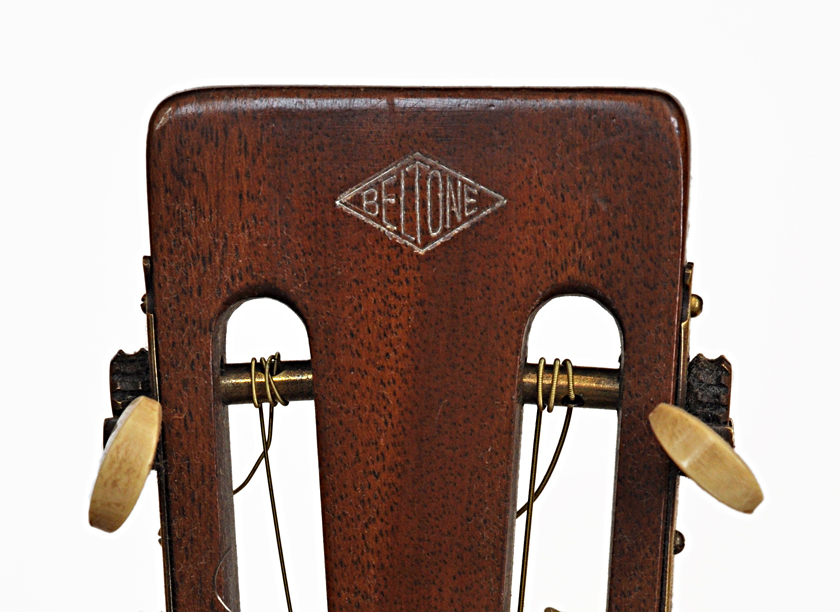
The "Paramount Style L" produced for the William L. Lange Company was not stamped as such, but the Paramount name appeared on a fancy inlaid headstock veneer supplied by the Lange Company.
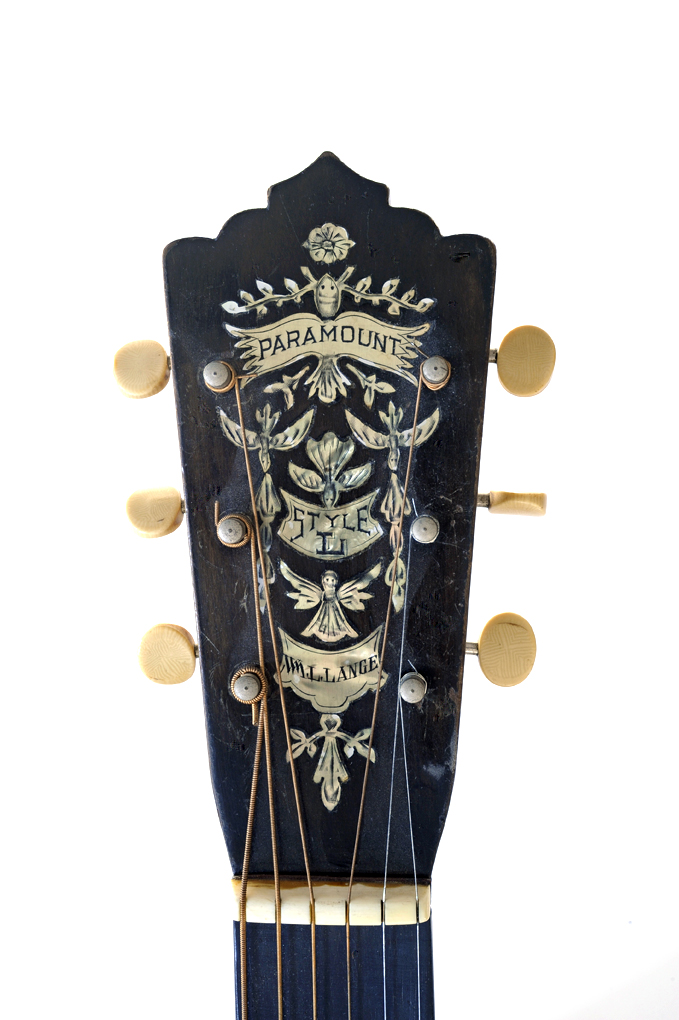
Outside Back Stamps
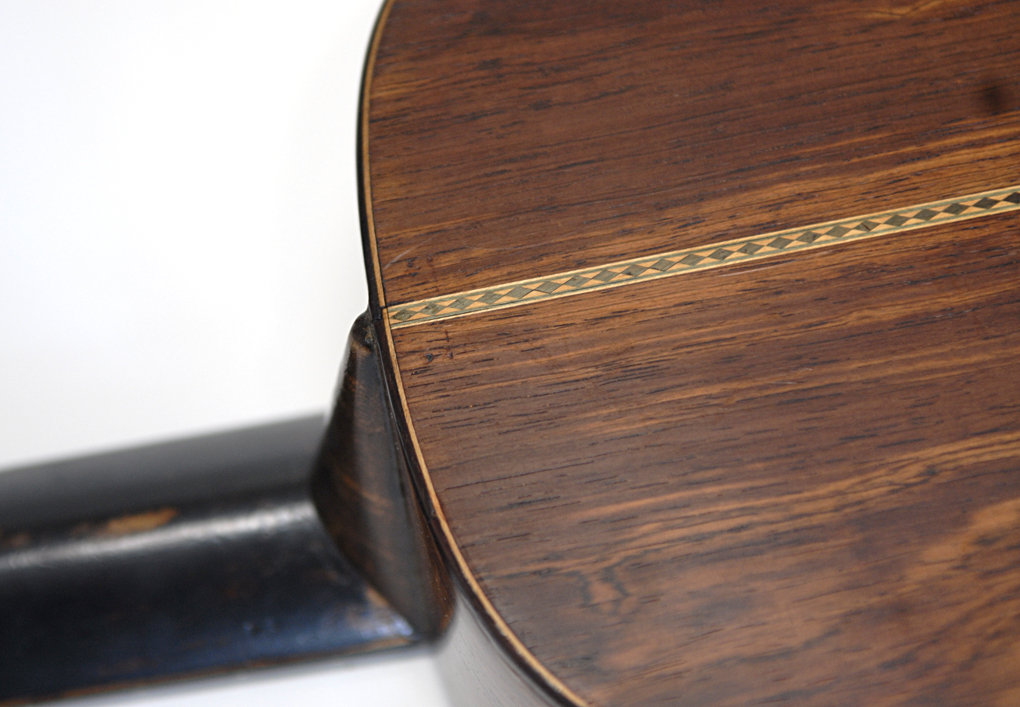
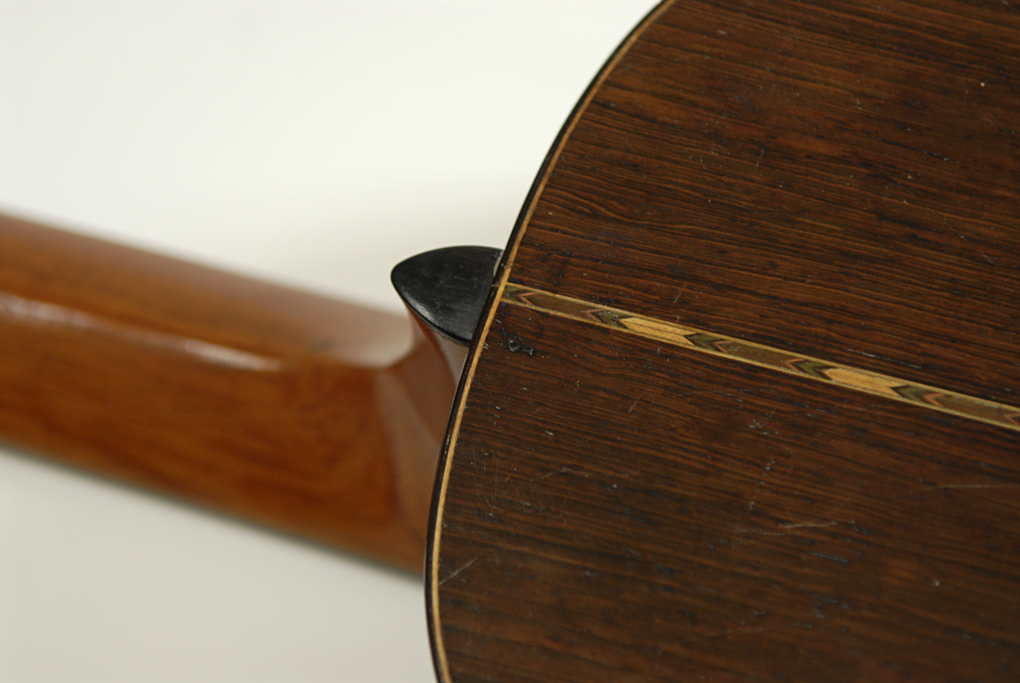
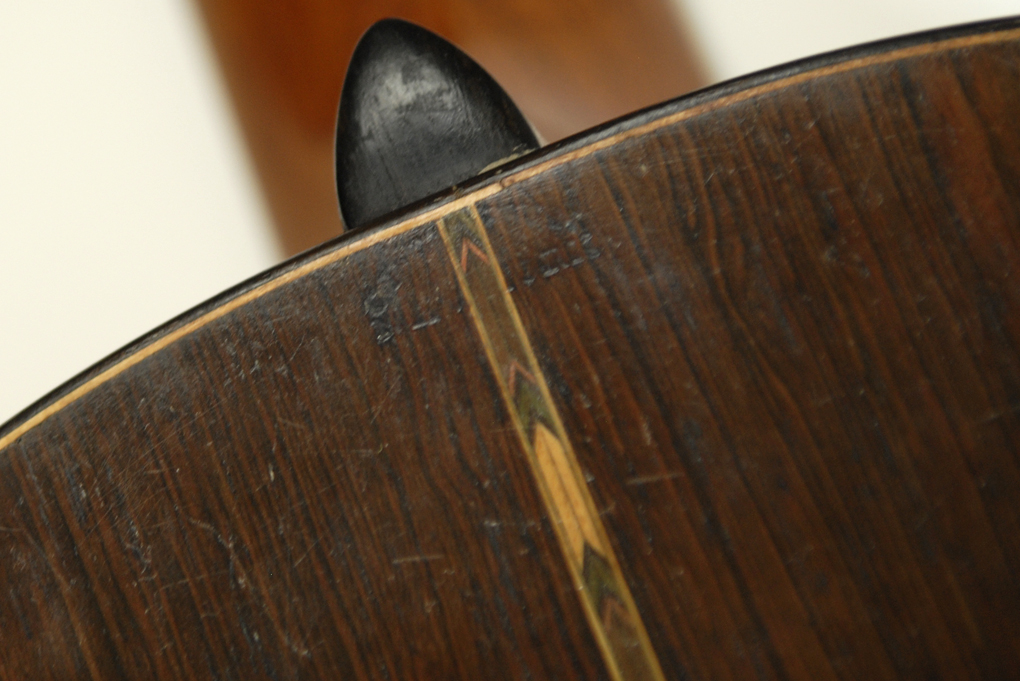
Inside Back Stamps
C.F. Martin, New York
Martin's earliest guitars are stamped "C.F. Martin, New York" on the inside back center strip.
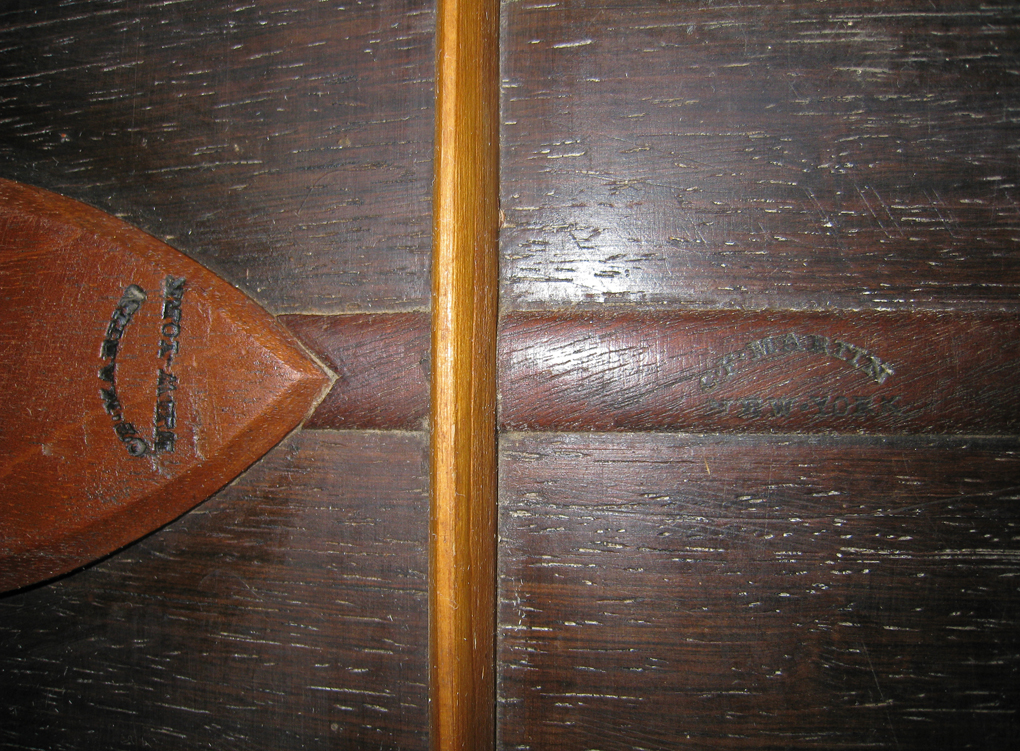
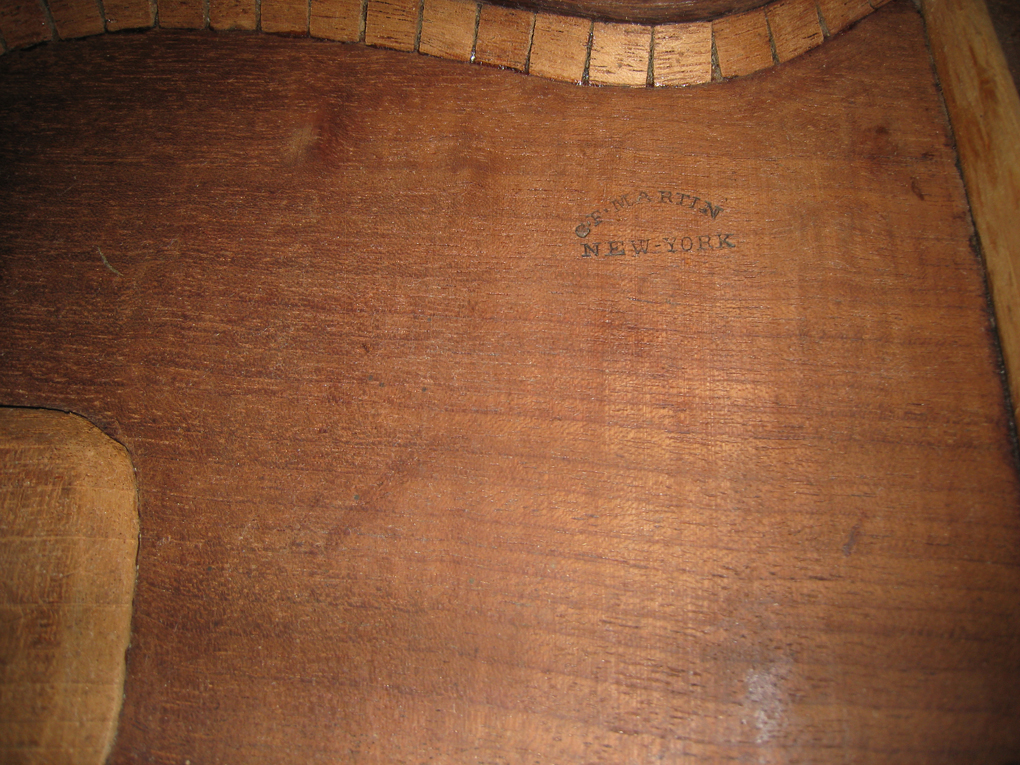
C.F. Martin & Co. New York
Once C.F. Martin Sr. took on his son and nephew as partners in 1867, the inside back center strip began to read "C.F. Martin & Co., New York". Martin continued using the New York stamp for many years after moving to Pennsylvania as his guitars were still distributed from New York.
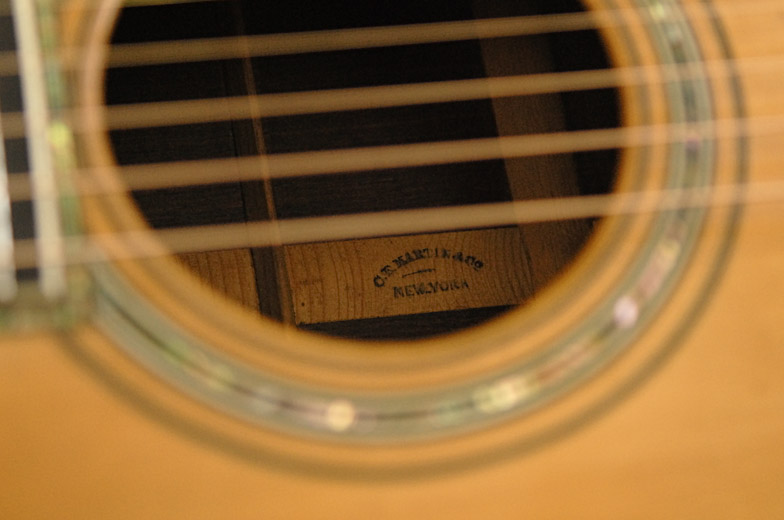
C. F. Martin & Co. Nazareth, PA
After Martin's distribution arrangement in New York ended in 1898, the inside stamp began to read "C. F. Martin & Co. Nazareth, PA"
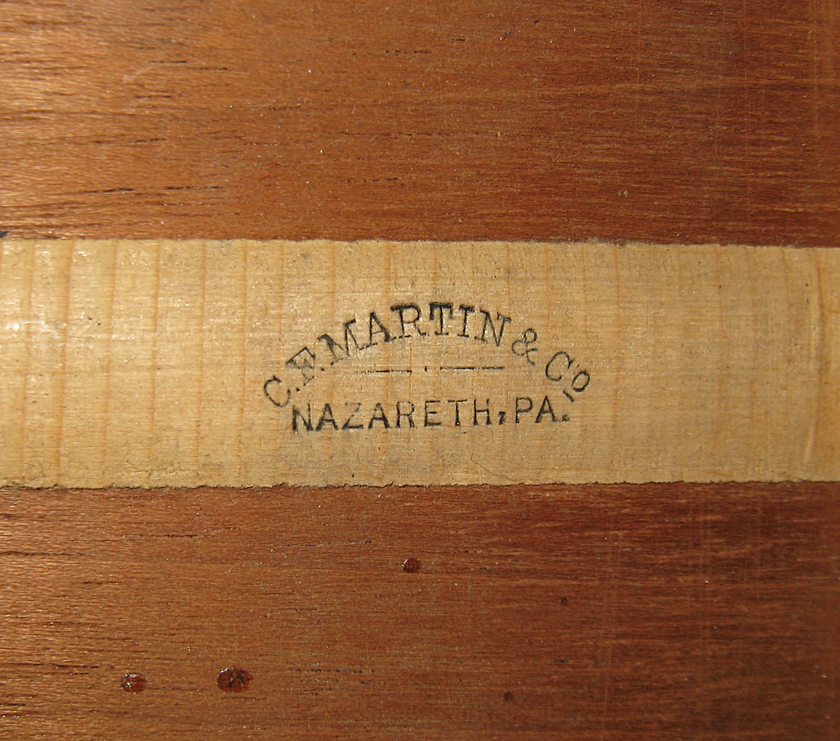
Many, but not all, of the guitars Martin made for other firms were stamped with the names of those firms.
Foden Special
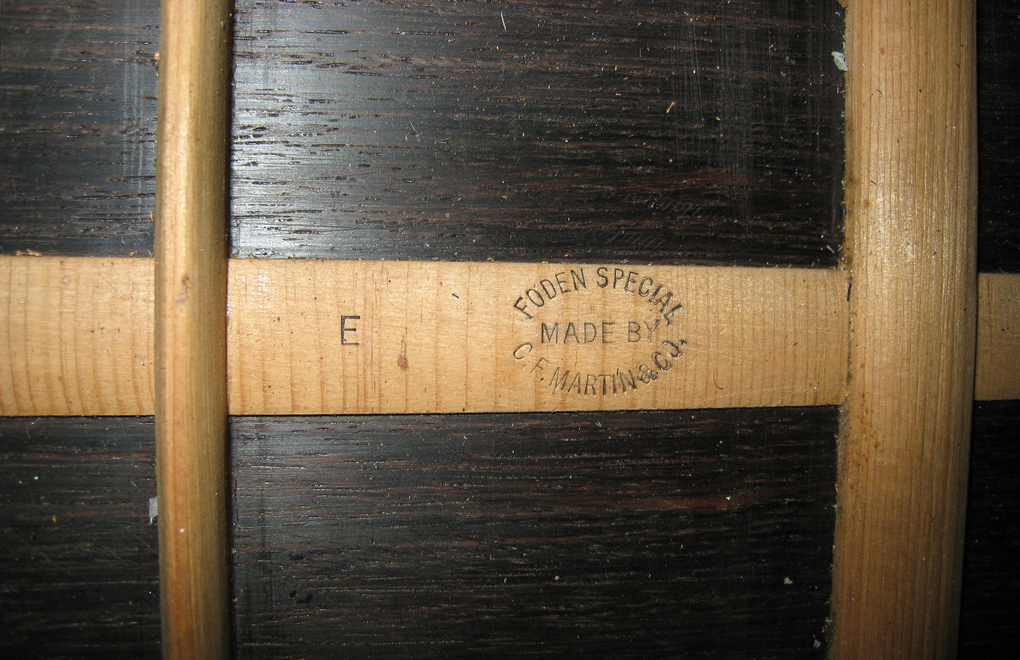
Oliver Ditson
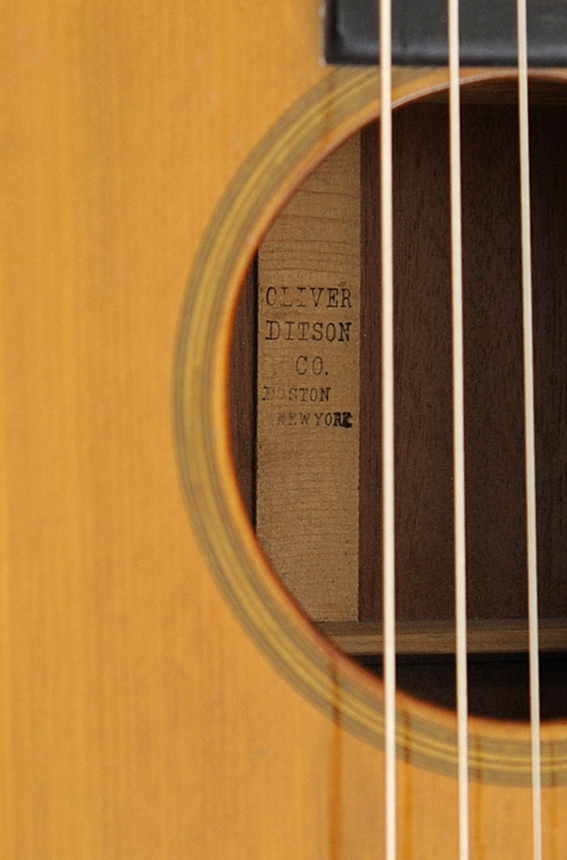
Grinnell Wolverine
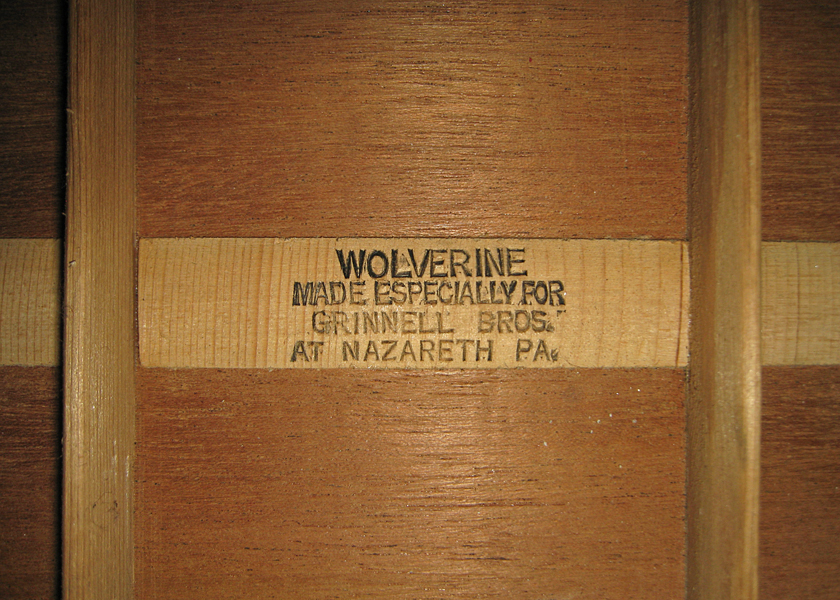
Southern California Music Company
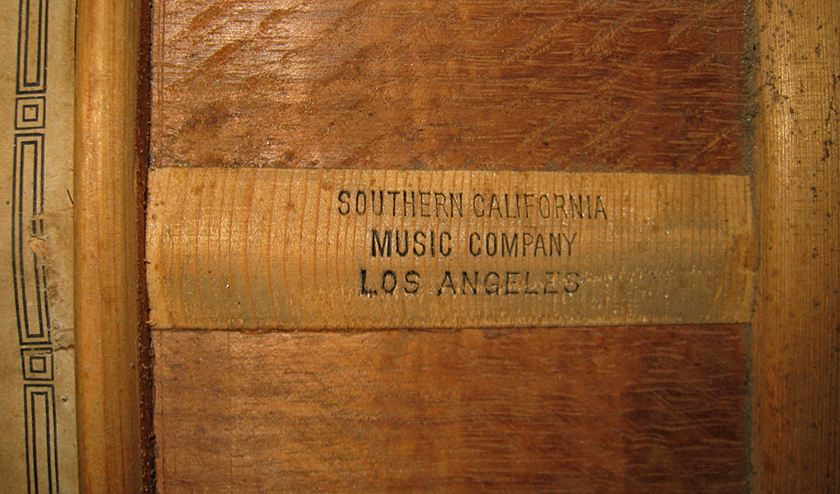
S.S. Stewart
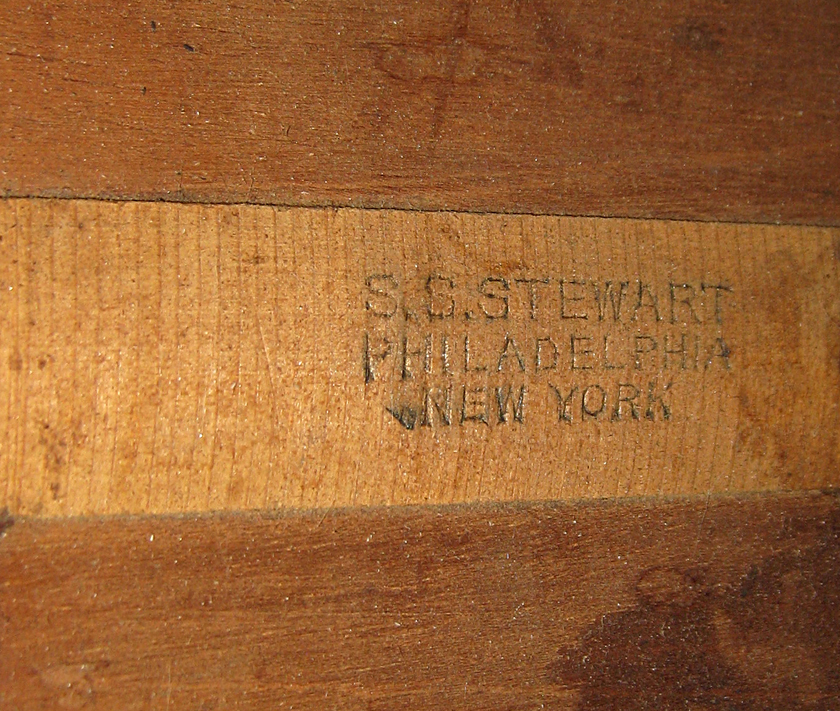
Briggs Special Mandolin
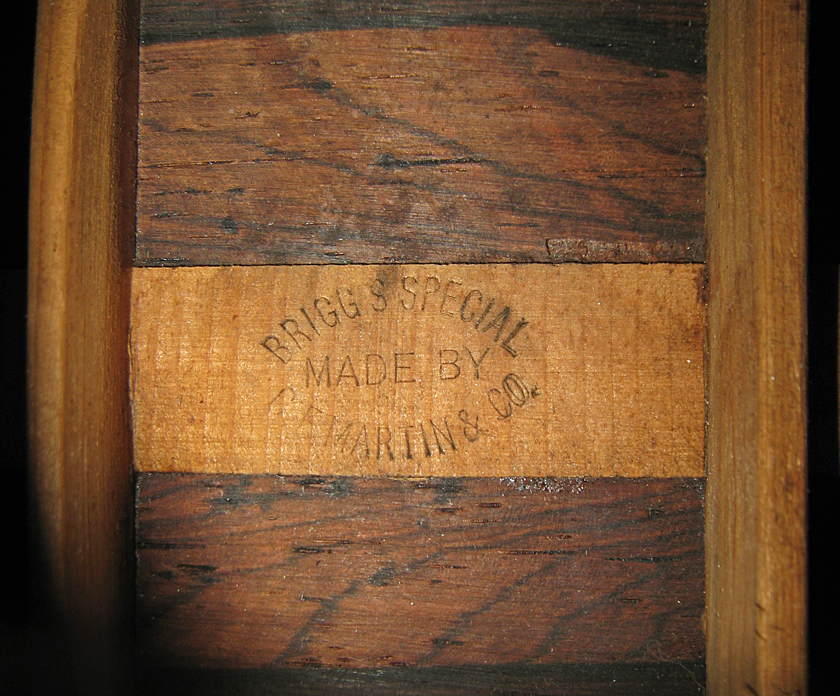
Neck Block Stamps
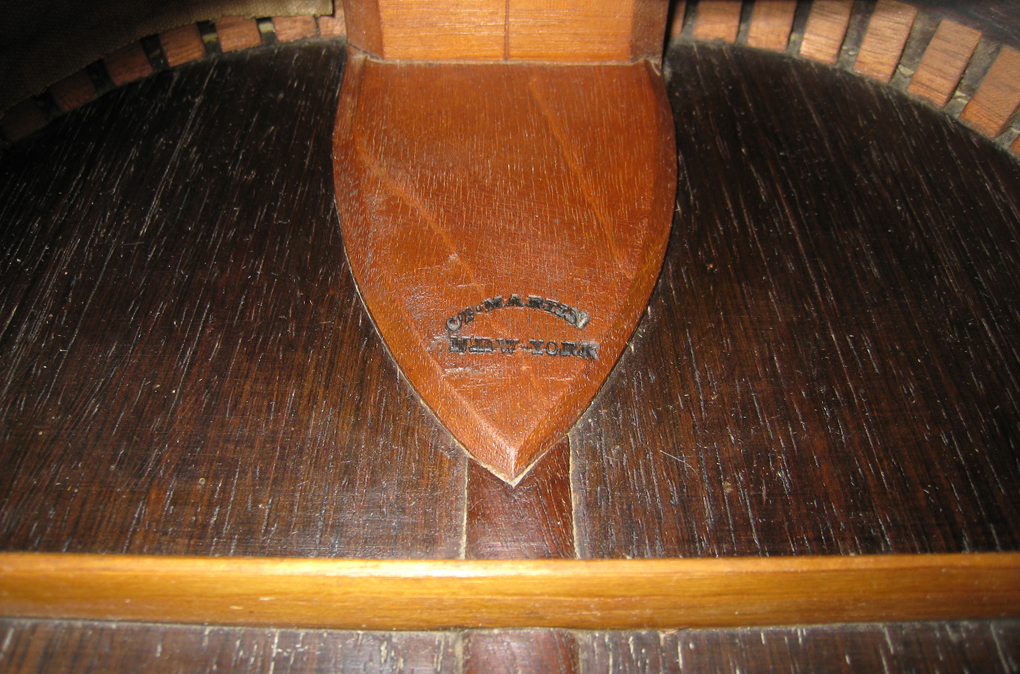
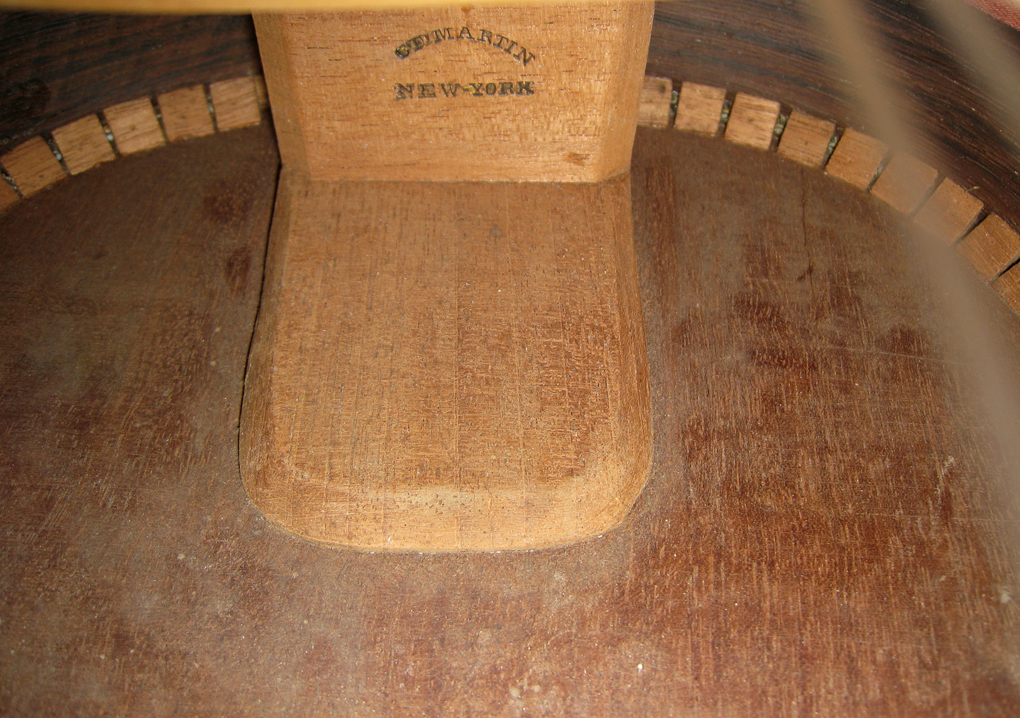
With the exception of early examples with the Spanish foot, such as the one above, all of the neck block stamps I've seen on Martins built through March, 1889 are upside down. Starting in February, 1893, all of the neck block stamps I've seen read right side up.
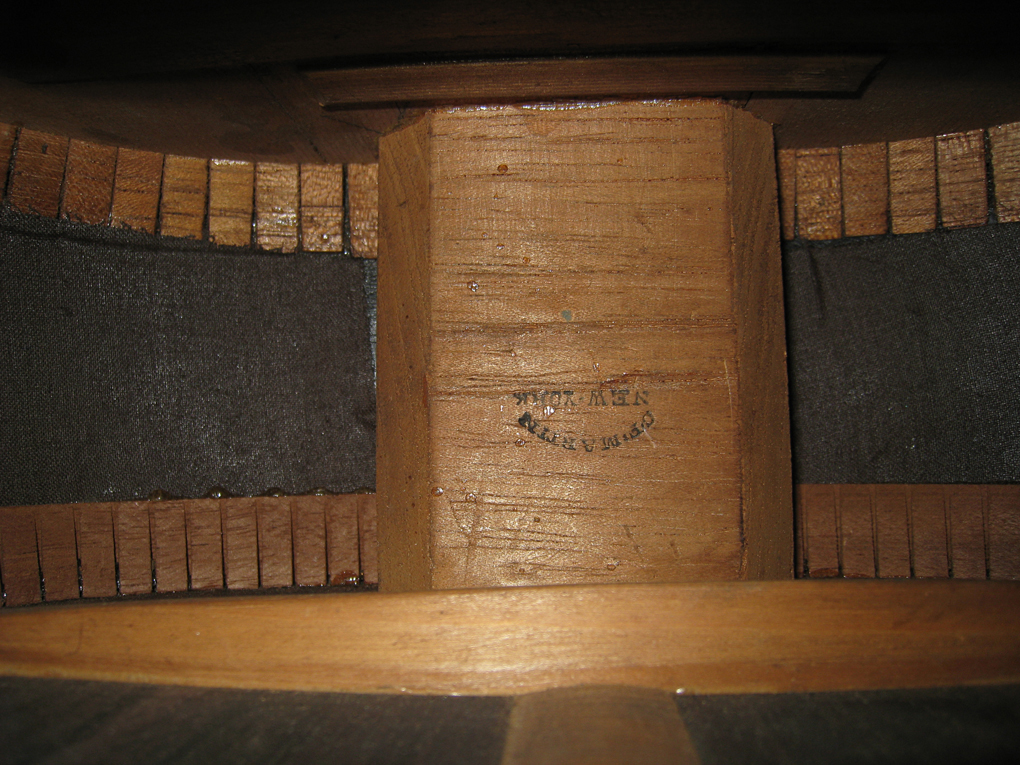
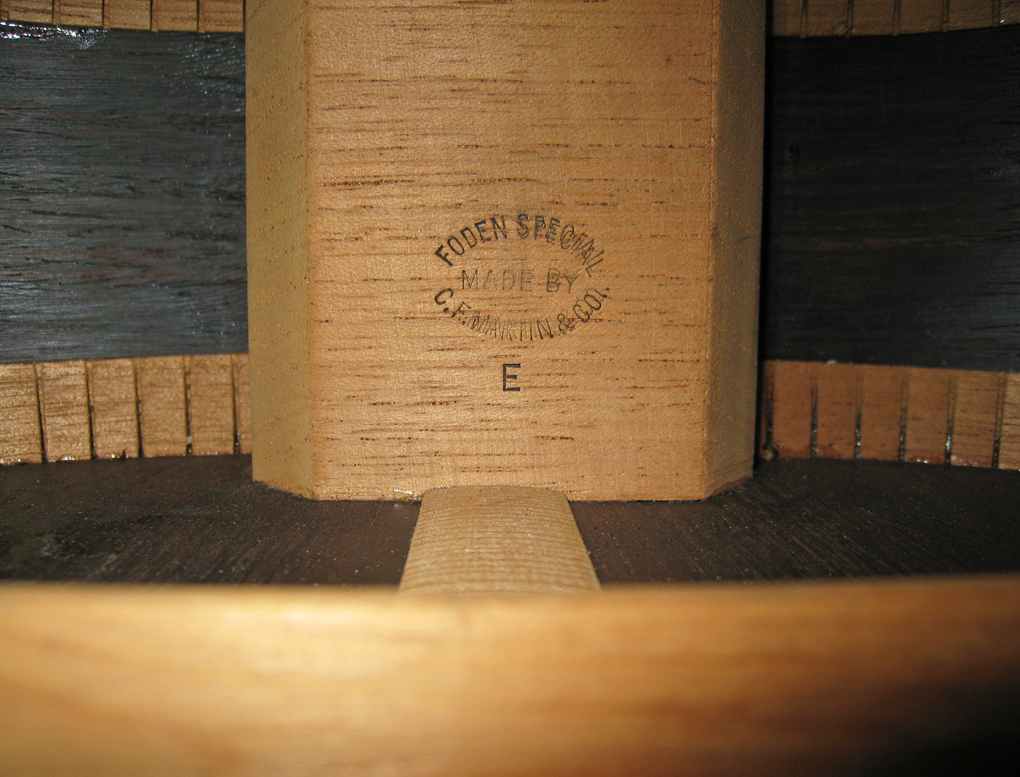
Serial Number Stamps
In 1898 Martin began assigning serial numbers to their guitars, starting with the number 8000, estimating the number of guitars produced to date.
Serial numbers, along with the new Nazareth, PA stamp, were imprinted on the neck block.
1898 Martin 1-21
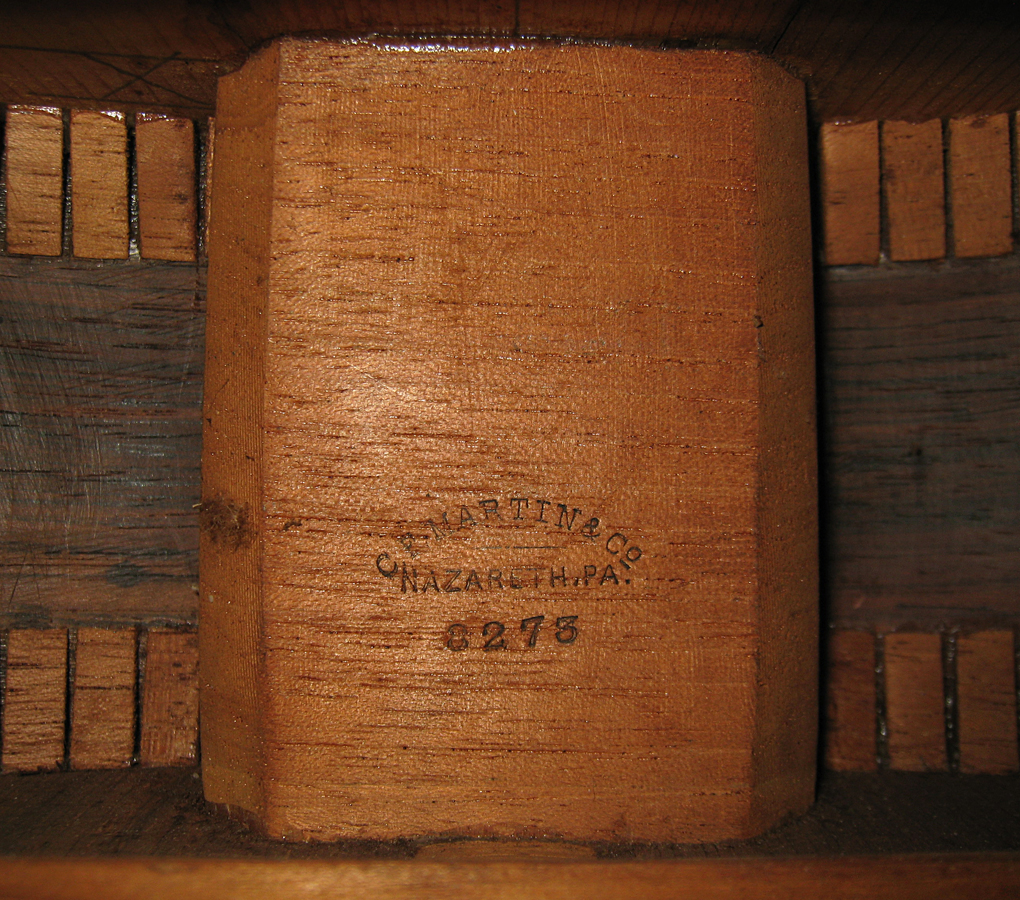
For a short period of time, in 1899, Martin also stamped the serial number on the end of the headstock:
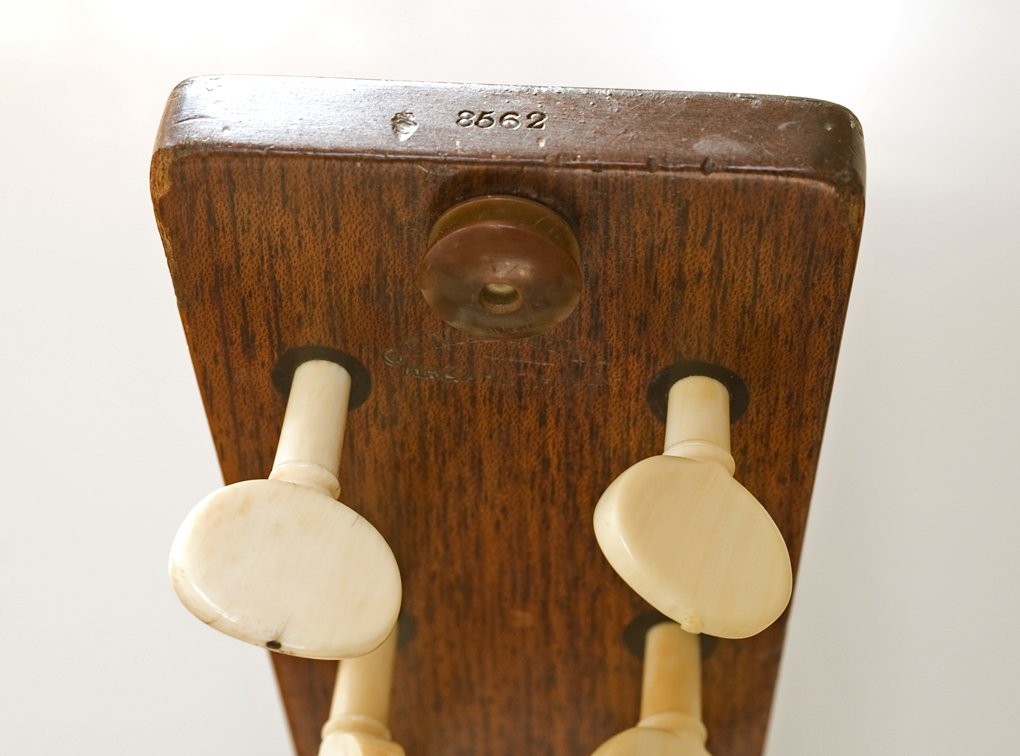
In 1918, Martin was still stamping the Nazareth Address on the neck blocks.
1918 000-42
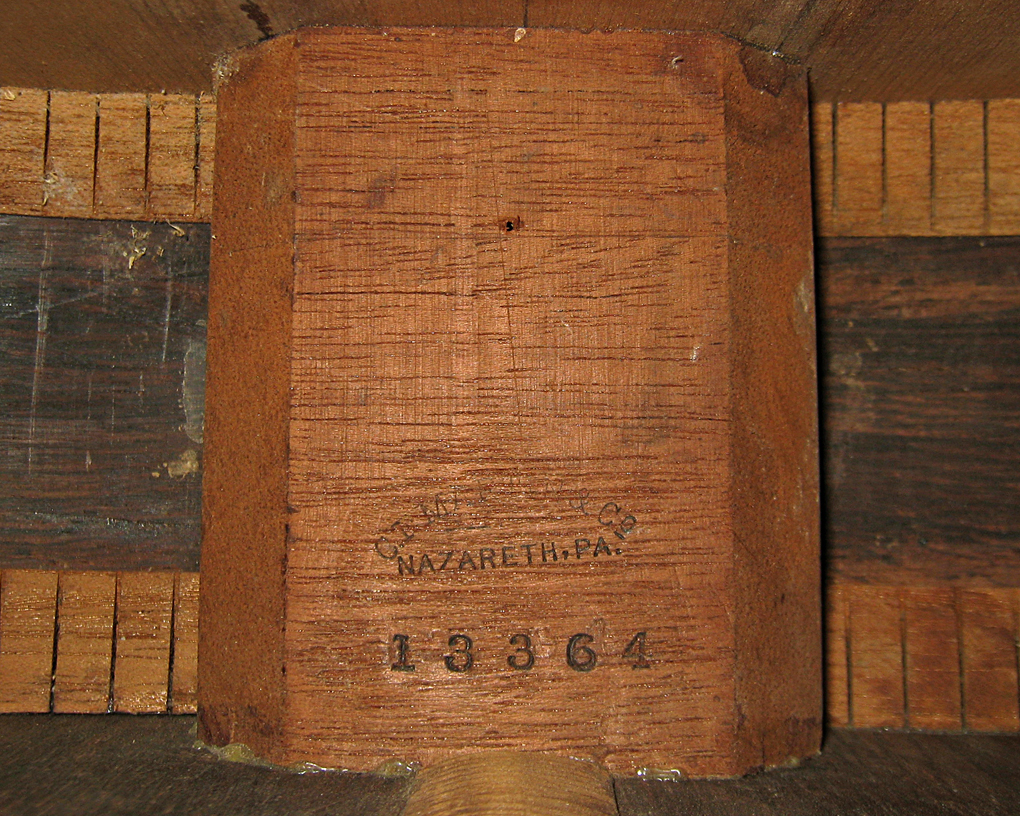
By 1919, when the company was struggling to keep up with production, Martin began stamping the serial number only.
1919 Martin 0-45
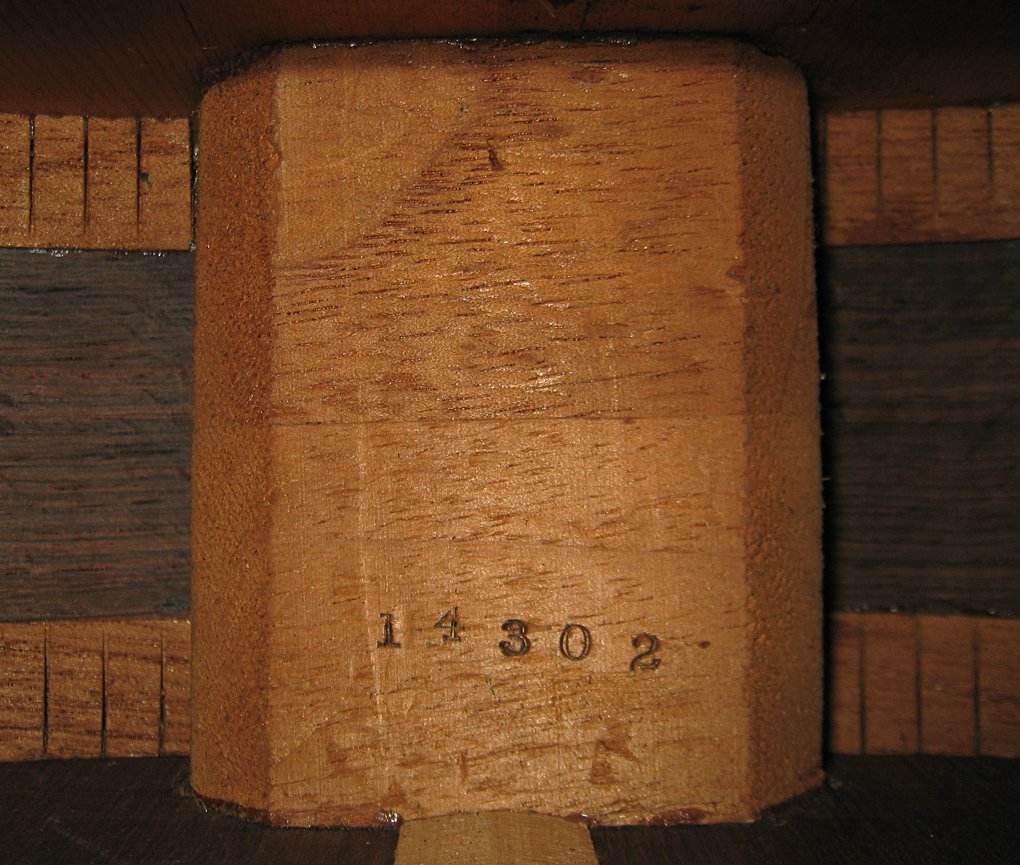
Beginning in 1930, Martin also stamped the model number on the neck block.
Apparently, Martin began stamping the Model name on the neck block sometime between 9/23/30, when this OM-45 Deluxe was stamped, and 10/24/30, when the OM-18P below was stamped.
1930 Martin OM-45 Deluxe, stamped 10/24/30
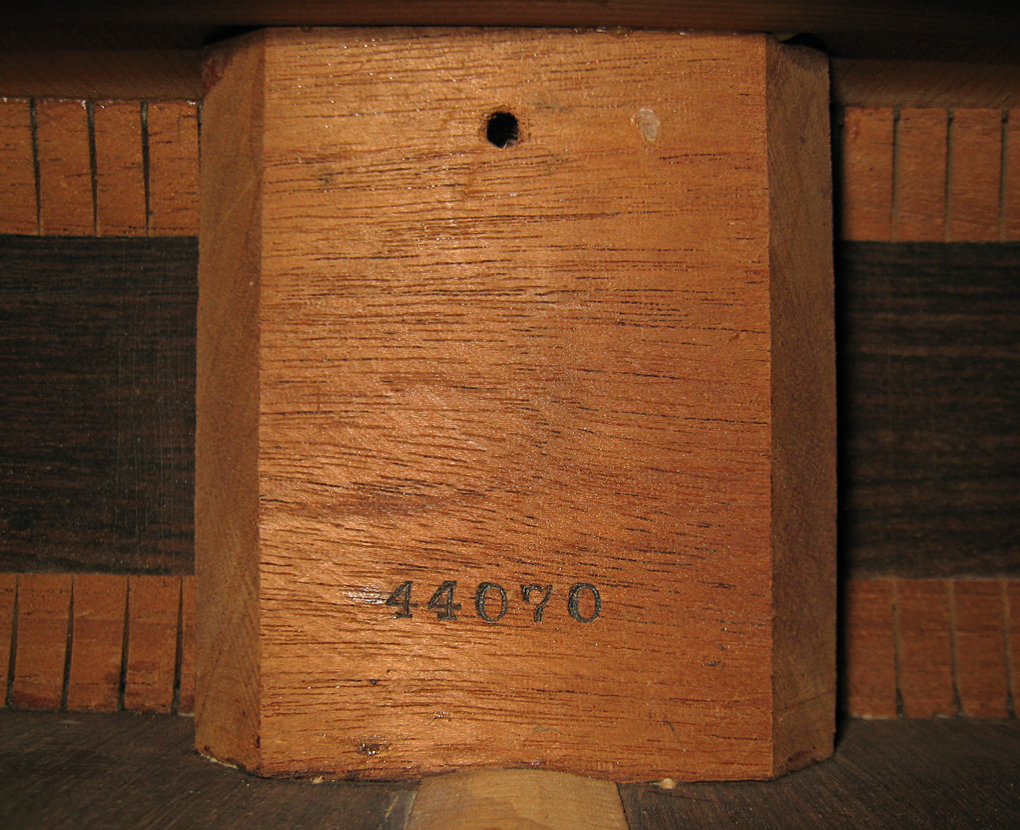
1930 Martin OM-18P
Stamped 10/24/30
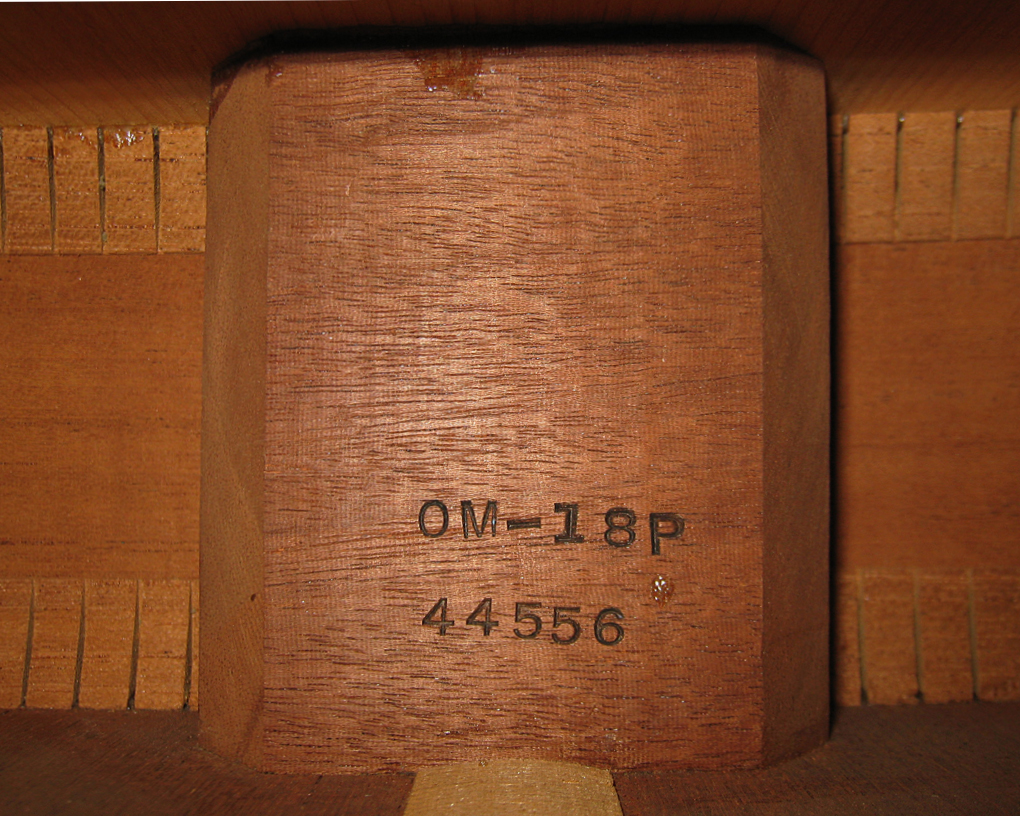
Signatures
Many, but not all, Martin guitars built between the 1870's and thesecond decade of the 20th centtury are dated in pencil on the underside of the top. The format varies greatly, with some initialed by F.H. Martin or a shop foreman, some containing the day and month, and some showing the year only.
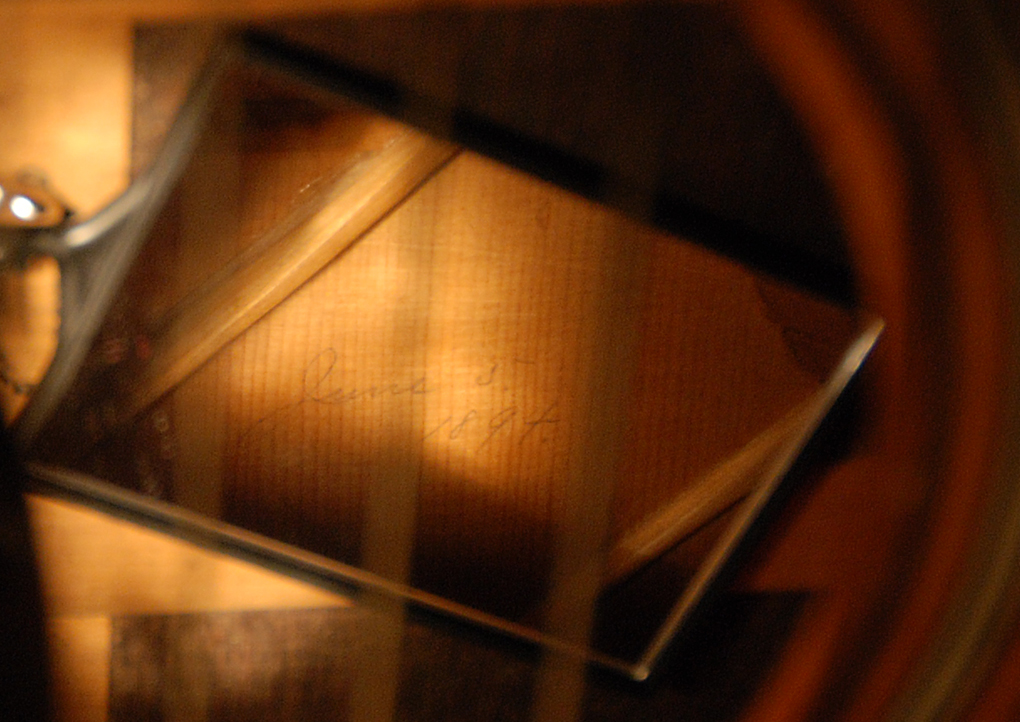
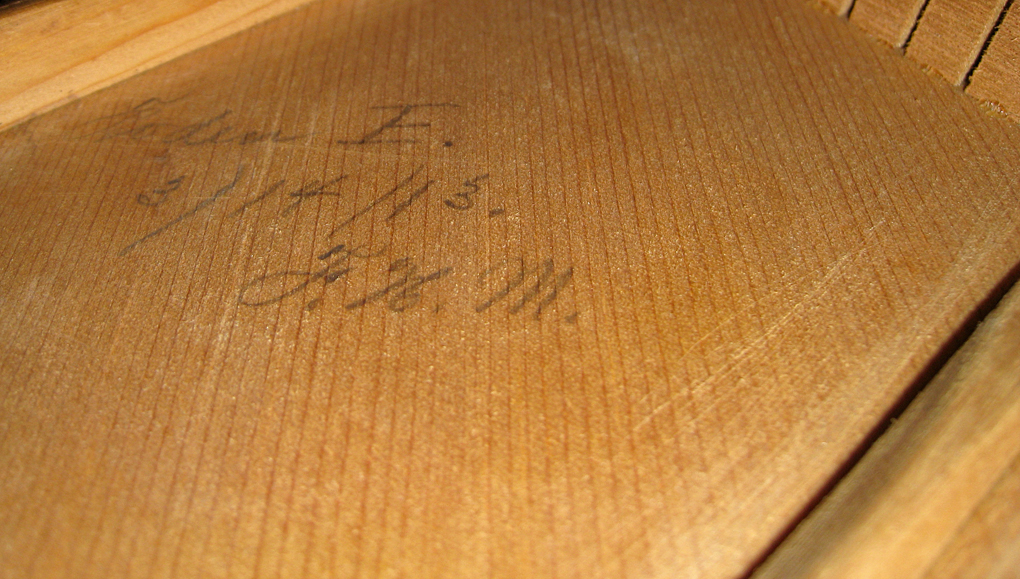
Repair signature
The guitar below is a rare example of an instrument with a repair that was documented, in this case by shop foreman John Deichmann, the creator of the Dreadnaught and a number of Martin's other greatest achievements.
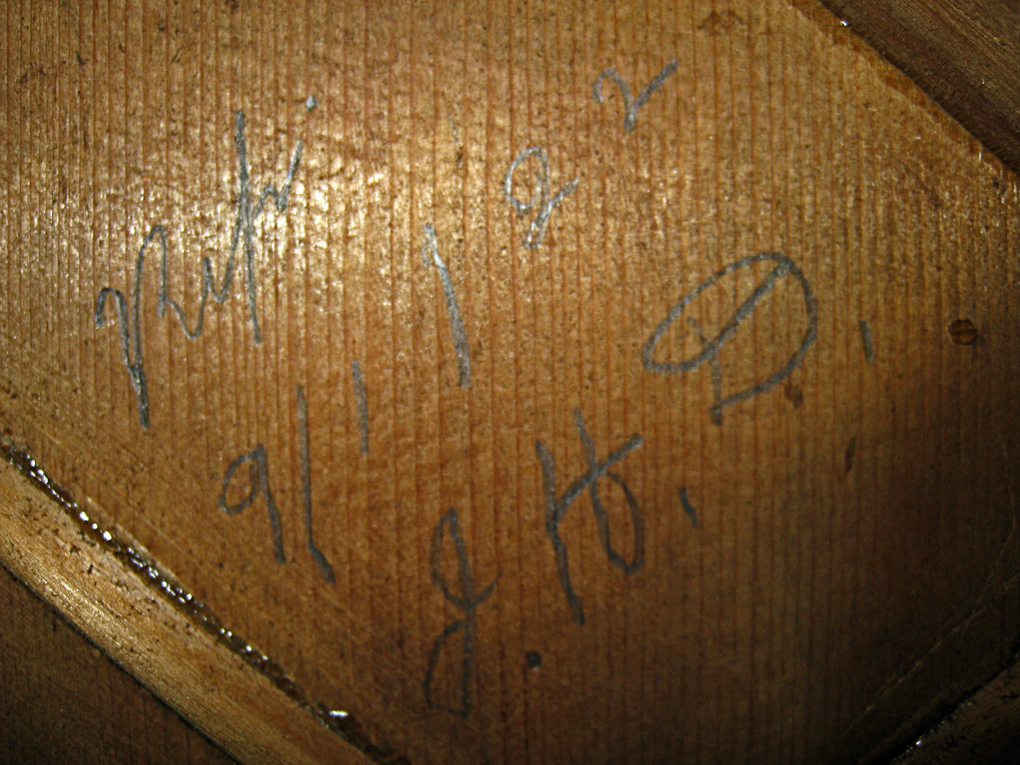
Case Labels
Martin used a number of various labels in their cases, with minor differences in typefaces and design.
c. 1870's 2 1/2 - 26
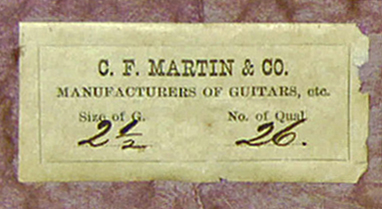
unknown date 0-28
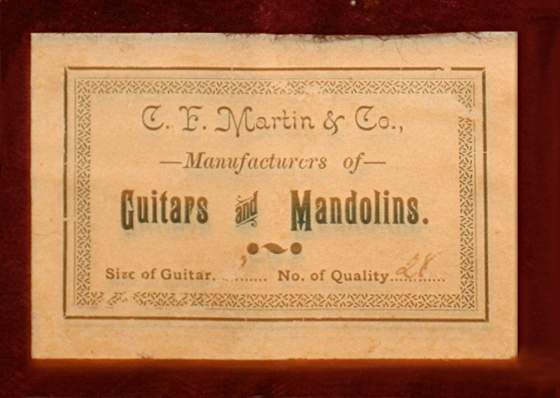
1888 2 1/2 -17
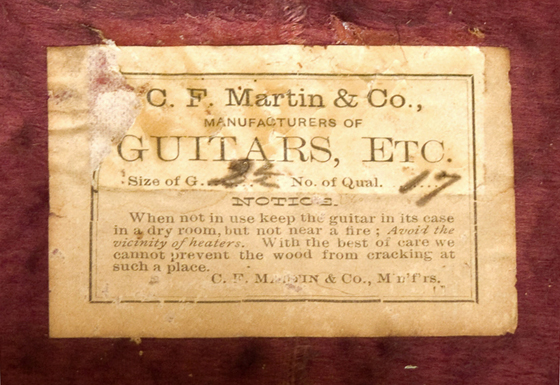
1893 2 -1/2 17
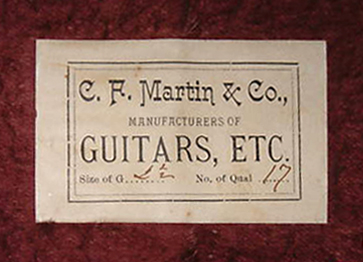
vintagemartin.com
To See Robert Corwin's Classic Photography of Folk and Roots Musicians, visit:
For Information on Photography for
Exhibition, Publication, CD's, Promotion, Web Pages, Tour Books,
to Purchase Photographic Prints, or
If You Have Questions or Suggestions About This Web Site or Vintage Martin Guitars:
e-mail: Robert Corwinentire site copyright ©1998 through 2011 Robert Corwin/Photo-Arts. All rights reserved.